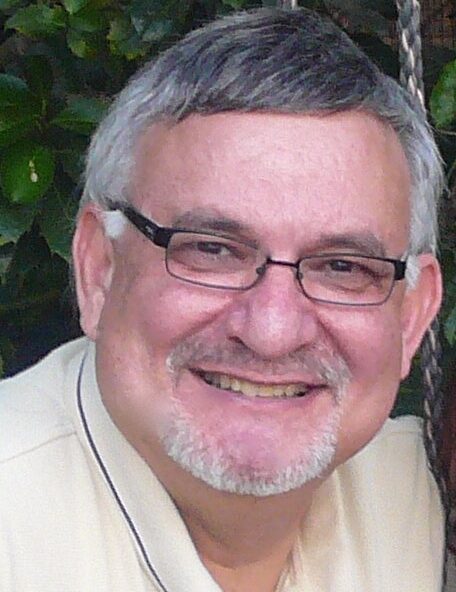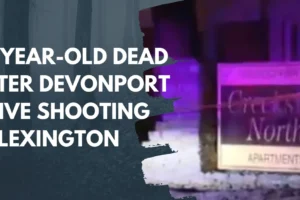While Common Core focuses on college and career readiness, education is about life readiness, and it needs to be much more robust, said Rick Miller, founder and president of Kids at Hope, a non-profit organization based in Phoenix.
“It’s about educating our children so they will be better family members, community members, enjoy their quality of life, as well as get an education and a decent job,” Miller said.
Kids at Hope founder and president Rick Miller says children need caring adults who believe in them, connect with them and can help them draw a road map to reach the future they want. Courtesy Kids at Hope
To do this, children need caring adults who believe in them, connect with them and can help them draw a road map to reach the future they want, Miller said.
For 21 years, Kids at Hope has spread its message to 14 states and Canada that all children are capable of success – no exceptions.
About 120 Arizona organizations including all juvenile probation departments in the state, Head Start, several cities, some Peter Piper Pizza stores, 20 school districts and 14 charter schools, are currently engaged in putting that belief into practice.
Miller and the organization have used evidence-based research to train adults to become “treasure hunters” who make a positive difference in the lives of children in the U.S. and around the world.
“The treasure hunter is someone who is committed to search beneath the surface of these children and find the talents and skills that exist in them which all too often are overlooked because we’re focused on their behavior,” Miller said.
Miller said Kids at Hope is not a program, but rather a cultural strategy of engaging an entire community.
“Everyone either makes an emotional deposit to a child or an emotional withdrawal when they cross paths with a kid. It’s never neutral,” Miller said.
Q: You founded Kids at Hope in 1993. How have the challenges children face changed?
A: We need to find a way to touch all kids, not just the kids who show up on our doorstep. We need to move from the isolated effectiveness we’ve been content with to collective effectiveness.
By overstating the value of technology, we’re disconnecting our kids from human relationships. Schools that are online based don’t have teachers in the classrooms, they have facilitators. If we’re so myopic we just want kids to meet standards and get enough credits to graduate, we forget about their emotional/social learning and we’re going to have some real issues in the future.
We’re such a busy society, we’ve become disconnected from our kids. How many times have you gone to a restaurant and seen a family all looking at their phones? We’ve disconnected from the human contact that makes us the species we’re supposed to be that depends on others and needs them in our lives. Technology is not the answer to that – another caring human being is.
We’re a highly mobile society. Our roots aren’t deep in any place. We don’t have that anchor during the emotional and social storms that come up in our lives. We need more social/emotional roots.
We’ve moved from an agricultural society, to an industrial society to a knowledge-based society in less than 100 years. We don’t have enough data to understand the consequences of this change in our lives. You can’t change progress. The antidote is to feel connected to each other.
Q: Making sure kids don’t slip through the cracks has been a major topic of conversation lately as Arizona works to revise and fund its Child Protective Services division. How do Kids at Hope adult volunteers keep children from becoming disconnected?
A: You get the villagers – adults – working from the same game plan. Kids don’t grow up in programs. Kids grow up in cultures. They’re the sum total of all their experiences.
Our core belief states that all children are capable of success – no exceptions. That takes us a giant step from where we are today.
Conventional wisdom says some kids are going to do well, some kids are going to do OK and we better be prepared for future failures. We can’t accept the conventional wisdom, because we lose too many kids along the way.
The kids that make it, it isn’t because we reduced, mitigated or eliminated the risk in their lives. It’s because we included hope. Hope comes from adults believing in you, connecting with you and teaching you to time travel.
As kids move around the community, school and home, they have caring adults in their lives that we call treasure hunters.
The treasure hunter is someone who is committed to search beneath the surface of these children and find the talents and skills that exist in them which all too often are overlooked because we’re focused on their behavior.
Q: What do Kids at Hope adult volunteers do to help children experience success at home, school, in the community and in hobbies/recreation?
A: We have always intuitively understood, talked about, but too often haven’t exercised that it takes a village to raise an educated child.
Yet, we very rarely tell villagers what they’re supposed to do and we don’t actually train them. We leave it to everybody’s devices to do what they think is best for kids.
We can do better than that. Science and evidence-based practices suggest if we do specific things we’re more effective. Those are what Kids at Hope shares with all caring adults or villagers.
We understand that kids do better in life when we surround them with adults who believe in them, who connect with them and who can help them mentally time travel.
Mental time travel is the ability to forecast your future and create a plan to get there. Some kids can do that. Many kids are unable to, so adults have to teach kids how to forecast their future.
For some reason, we thought if we found the right program that would make a difference in kids’ lives, but it’s not the programs it’s the relationships.
Where is the child’s future? We just identified it. Home and family, education, career, community service and their hobbies and recreational interests.
When we ask a kid about their future, we usually limit it to one dimension when we ask “What do you want to be when you grow up?”
It’s more than that. What kind of family member do you want to be? How do you want to give back to your community? What do you want to do for fun?
Q: Schools and organizations who use Kids at Hope say it benefits children. Why does Kids at Hope work so well, and do you have data on that?
A: It brings us back to what we know makes a difference in kids lives, and it resonates, all of us know it from our own experiences.
What makes a difference is you surround kids with adults who truly believe in them. No child is allowed to leave your school or organization without having meaningful relationships with caring adults who create aces – high expectations and opportunities to success.
We have a computer system that tracks aces – relationships. Most schools and organizations track attendance, disciplinary referrals, grades and test scores, but never tracked relationships. We never knew whether kids were connected or not.
We invited Frank DeAngelis, the principal of Columbine High School during its tragedy in April 1999, to our yearly gathering and asked him what happened to Dylan Klebold and Eric Harris.
Here’s a pristine community in Colorado, with all the bells and whistles, and everything money can buy. How did a community like that create two killers?
Frank’s answer was, I think quite poignant, they became disconnected. It wasn’t because we didn’t have enough programs for them. It’s because they became disconnected from relationships with caring adults.
Then we asked when did they become disconnected? Frank’s answer was we don’t know. We don’t track that data.
But now we do.
When Johnny’s behavior and attitude are questionable, use the tracking system to see if any adult on campus is connected to Johnny, and if they create high expectations and opportunities for him to succeed.
If you find out there’s no one, then you can offer a more appropriate intervention than one size fits all.
In aces tracking, we might find out the person who knows Johnny best, cares about him, and has opportunities to engage him may be the school bus driver. So we use the bus driver in the intervention, not just the social worker.
We have a research synthesis on the website – that shows the research we drew our conclusions from and research that said we’re on the right track.
There are some recent studies done around Kids at Hope. Two doctoral dissertations from Roosevelt University looked at a school that went from the worst performing school in the district to the top school in five years. Both studies identified that by changing the school’s attitude and culture to Kids at Hope’s belief that all kids will succeed – no exceptions, they changed its performance level.
A study on a school in St. Lucie, Fla. that had a gang problem looked at Kids at Hope instead of a gang prevention program and said maybe we need to change our culture.
They discovered when asking gang members why are you in a gang, that one of the recurring themes was because we have no hope. As the school used Kids at Hope, they’ve seen their gang problem decrease.












